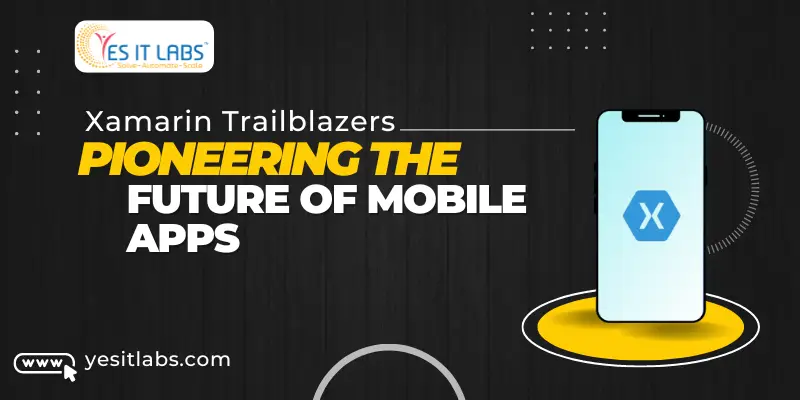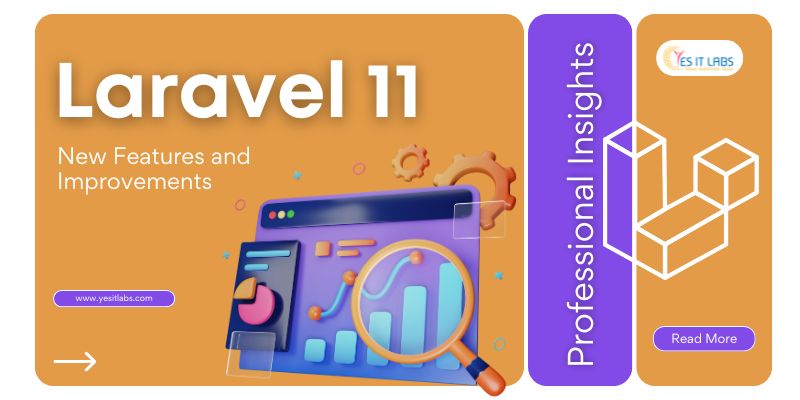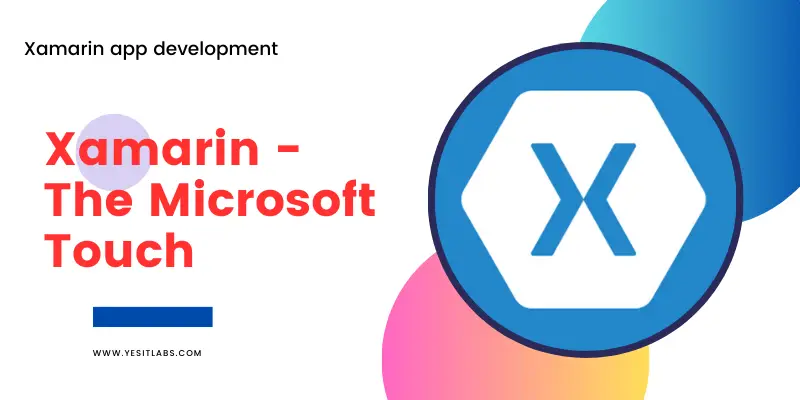
 By Aidan Butler
By Aidan Butler Xamarin Trailblazers: Pioneering the Future of Mobile Apps
In the bustling world of mobile app development, where innovation is the key to staying ahead, Xamarin emerges as a beacon of possibility. With its unique approach to cross-platform app development, Xamarin has been empowering developers to create stunning, high-performance applications for a wide range of devices. Let’s delve into the realm of Xamarin app development and explore how Xamarin developers are shaping the future of mobile apps.
Unveiling Xamarin: The Cross-Platform Marvel
Xamarin, acquired by Microsoft in 2016, has revolutionized the way developers build mobile applications. Unlike traditional approaches that require separate codebases for different platforms (iOS, Android, etc.), Xamarin allows developers to write a single codebase in C# and deploy it across various platforms, saving time and effort without compromising on performance or user experience.
The Rise of Xamarin Developers
Xamarin developers, often referred to as trailblazers in the mobile app development landscape, possess a unique set of skills that enable them to harness the full potential of this platform. They are proficient in C#, .NET, and the Xamarin framework, allowing them to seamlessly translate their ideas into fully functional, visually appealing apps that run smoothly on both iOS and Android devices.
Breaking Down the Benefits
1. Code Reusability: With Xamarin, developers can write code once and deploy it across multiple platforms, significantly reducing development time and effort.
2. Native Performance: Xamarin apps leverage native APIs and UI components, ensuring optimal performance and a native look and feel on each platform.
3. Time-to-Market: By streamlining the development process, Xamarin accelerates time-to-market, allowing businesses to reach their target audience faster and gain a competitive edge.
4. Cost Efficiency: With a single codebase for multiple platforms, Xamarin helps businesses save on development costs without compromising on quality.
The Journey of a Xamarin Developer
Becoming a proficient Xamarin developer requires dedication, continuous learning, and a passion for innovation. Let’s take a closer look at the journey of a Xamarin developer:
1. Learning the Basics: Xamarin developers start by mastering the fundamentals of C# and .NET development, familiarizing themselves with the Xamarin framework, and understanding its architecture.
2. Hands-on Experience: Through practice and experimentation, developers gain hands-on experience in building Xamarin applications, learning to navigate the intricacies of cross-platform development.
3. Community Engagement: Active participation in the Xamarin community, attending conferences, webinars, and workshops, and collaborating with fellow developers are crucial steps in the journey of a Xamarin developer.
4. Staying Updated: In the rapidly evolving world of technology, staying updated with the latest trends, tools, and best practices is essential for Xamarin developers to stay ahead of the curve.
Xamarin in Action: Real-world Applications
From enterprise solutions to consumer-facing apps, Xamarin is powering a diverse range of applications across industries. Let’s explore some real-world examples of Xamarin in action:
1. The World Bank Group’s Survey Solutions: Xamarin was instrumental in developing Survey Solutions, a mobile data collection platform used by the World Bank Group to gather vital socio-economic data from around the world.
2. UPS Mobile: The UPS Mobile app, built with Xamarin, provides users with real-time package tracking, shipping services, and delivery notifications, enhancing the customer experience.
3. Alaska Airlines: Alaska Airlines utilized Xamarin to create a feature-rich mobile app that allows users to book flights, check-in, access boarding passes, and receive flight alerts seamlessly.
Challenges and Solutions
While Xamarin offers numerous benefits, it’s not without its challenges. Compatibility issues, platform-specific requirements, and performance optimization are some of the hurdles developers may face. However, with a robust community support system, extensive documentation, and powerful debugging tools, Xamarin developers can overcome these challenges effectively.
Conclusion: Embracing the Future
As technology continues to evolve, Xamarin remains at the forefront of mobile app development, empowering developers to push the boundaries of innovation. With its unmatched versatility, performance, and cost-effectiveness, Xamarin is poised to shape the future of mobile apps and redefine the way we interact with technology. So, whether you’re a seasoned developer or an aspiring enthusiast, now is the time to join the ranks of Xamarin trailblazers and pave the way for the next generation of mobile applications.
In the ever-expanding universe of mobile app development, Xamarin stands as a guiding light, illuminating the path towards a future where possibilities are limitless, and innovation knows no bounds. So, what are you waiting for? Take the plunge into the exciting world of Xamarin app development and become a part of the revolution today!
Tags: hire xamarin developers in usa, Xamarin, Xamarin app development, xamarin app development company in usa, Xamarin developer, xamarin development company
Latest Resources
Wix vs WordPress: Comprehensive Features and Pricing Guide
October 30, 2024
How Long Does Mobile App Development Really Take?
October 28, 2024
Laravel 11: New Features and Improvements
October 24, 2024
Odoo Website Builder: The Ultimate Tool for Non-Developers
October 22, 2024















 Services
Services

